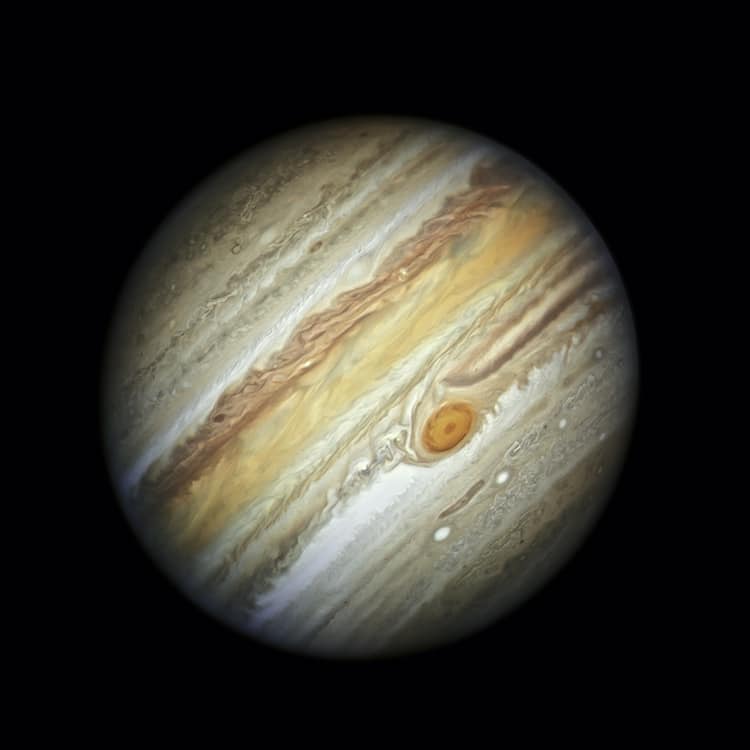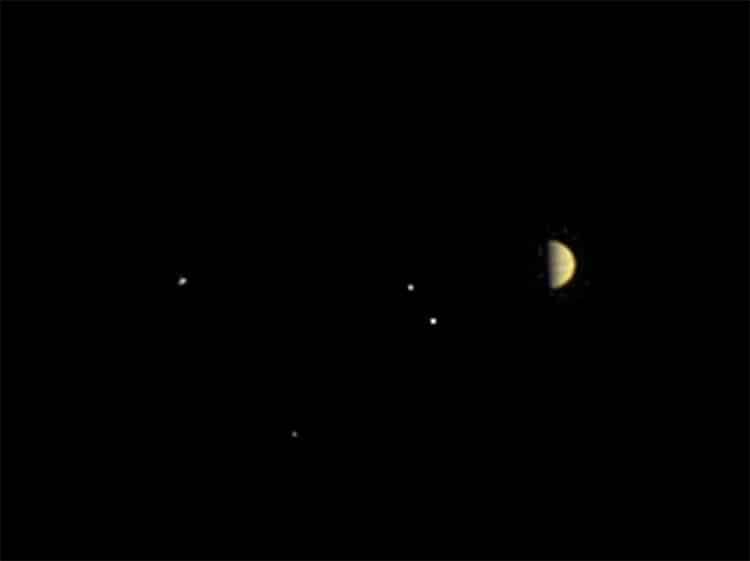Jupiter as photographed by Hubble, with its Great Red Spot (actually a storm).
(Photo:NASA, ESA, A. Simon (Goddard Space Flight Center), and M.H.
Wong (University of California, Berkeley))
Jupiter is the fifth planet from our Sun.

Jupiter as photographed by Hubble, with its Great Red Spot (actually a storm). (Photo:NASA, ESA, A. Simon (Goddard Space Flight Center), and M.H. Wong (University of California, Berkeley))
Jupiter arrived in opposition on September 26, 2022.
This occurs every thirteen months.
As the Sun set, the planet rose in the east.

NASA’s Juno spacecraft took this image in 2016 while 6.8 million miles from Jupiter. Moons Io, Europa, Ganymede, and Callisto are also visible.(Photo: NASA/JPL-Caltech/SwRI/MSSS)
Big and bright, it is visible to the naked eye.
Under these conditions, its moons are also visible with binoculars.
This enhanced visibility will continue to impress until Wednesday.
Another factor behind this phenomenon is the incredibly short distance between Earth and Jupiter.
On Friday, September 30, thecrescent moon and star Antareswill form a brilliant pair.
For more info on what to see when, check out thisguideto the appearance of the planets andstars.
The gas giant Jupiter is closer to Earth along its orbit than it has been in decades.
NASA’s Juno spacecraft took this image in 2016 while 6.8 million miles from Jupiter.
Moons Io, Europa, Ganymede, and Callisto are also visible.